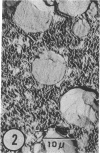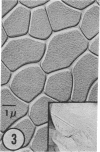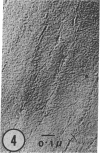Abstract
Freeze etching of solute model systems (e.g., glycerol or ferritin solutions) demonstrates that cryofixation can introduce serious artifacts due to the segregation of the dissolved or dispersed material from the solvent. Since, in principle, this problem can be reduced by increasing the cooling rate, a new technique has been developed which combines spray freezing with freeze etching. This spray-freeze-etching is applied by first spraying the specimen into a liquid cryomedium. The frozen droplets are then “glued” together with butylbenzene to form a regular freeze-etch specimen, while the temperature of the sample is kept at -85°C. The results obtained by spray-freeze-etching are far superior to those obtained by standard freezing. Our results, using 5% glycerol as a test specimen, are equivalent to those obtained by the high-pressure method (1). The reduction of segregation during freezing makes freeze etching a method applicable for the investigation of solute systems. Furthermore, the study of unicellular organisms or cellular fractions by freeze etching without the use of antifreeze is made possible.
Keywords: spray-freezing, solute model systems, liquid nitrogen and propane
Full text
PDF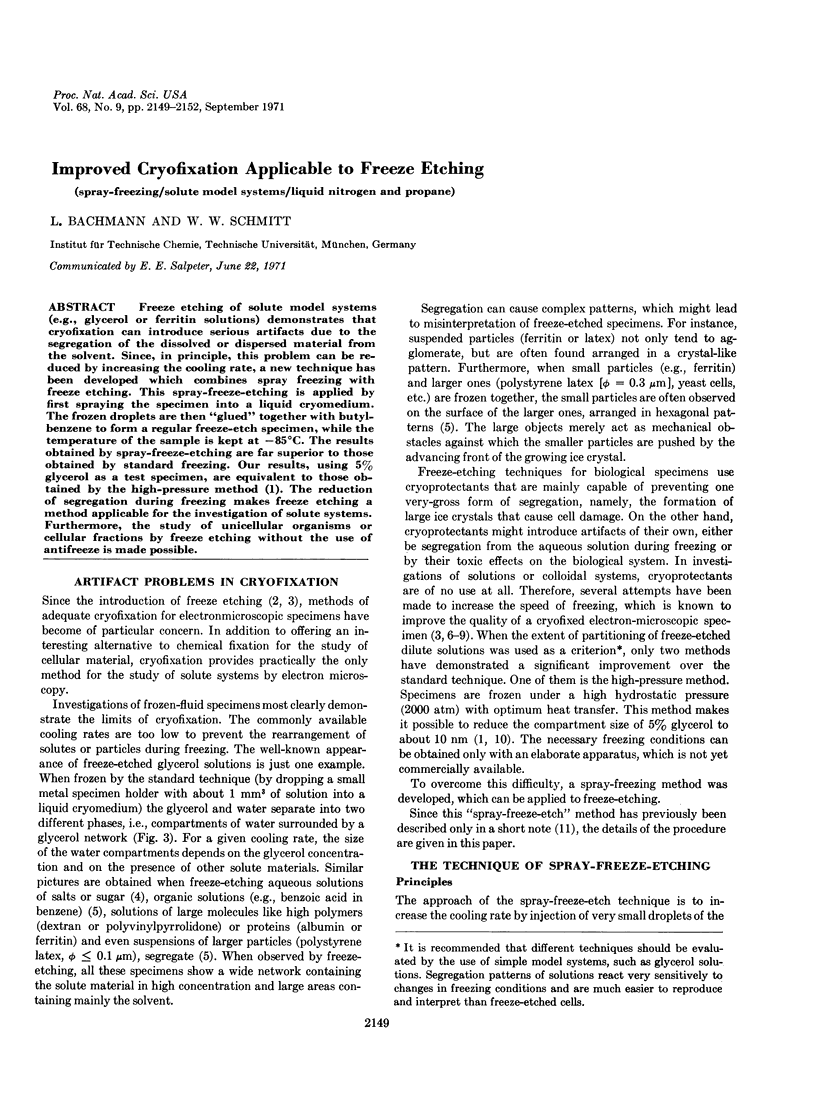
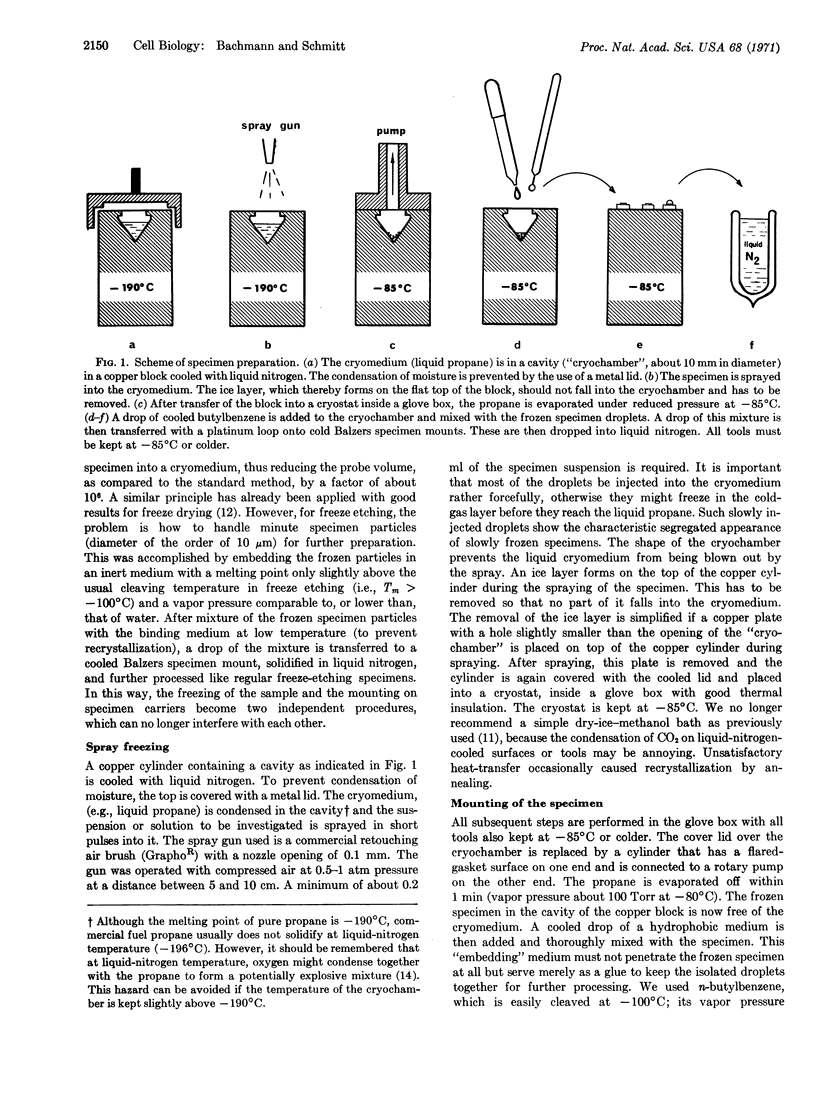
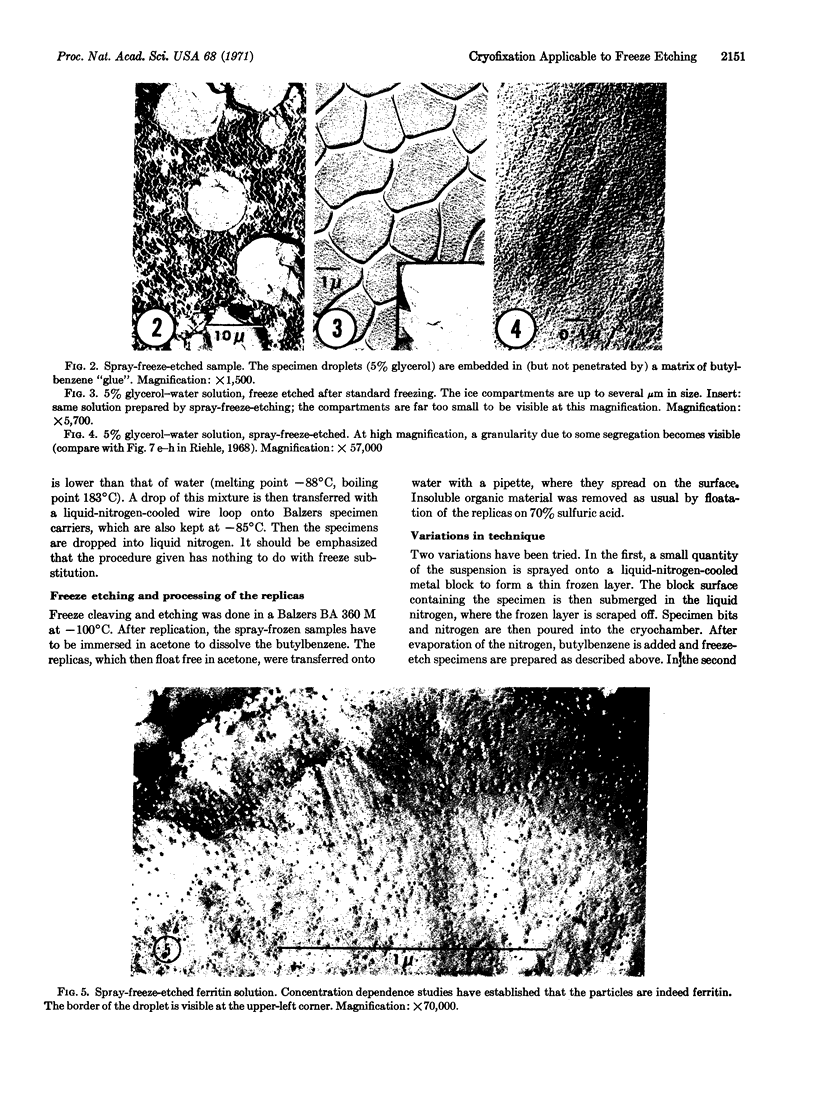
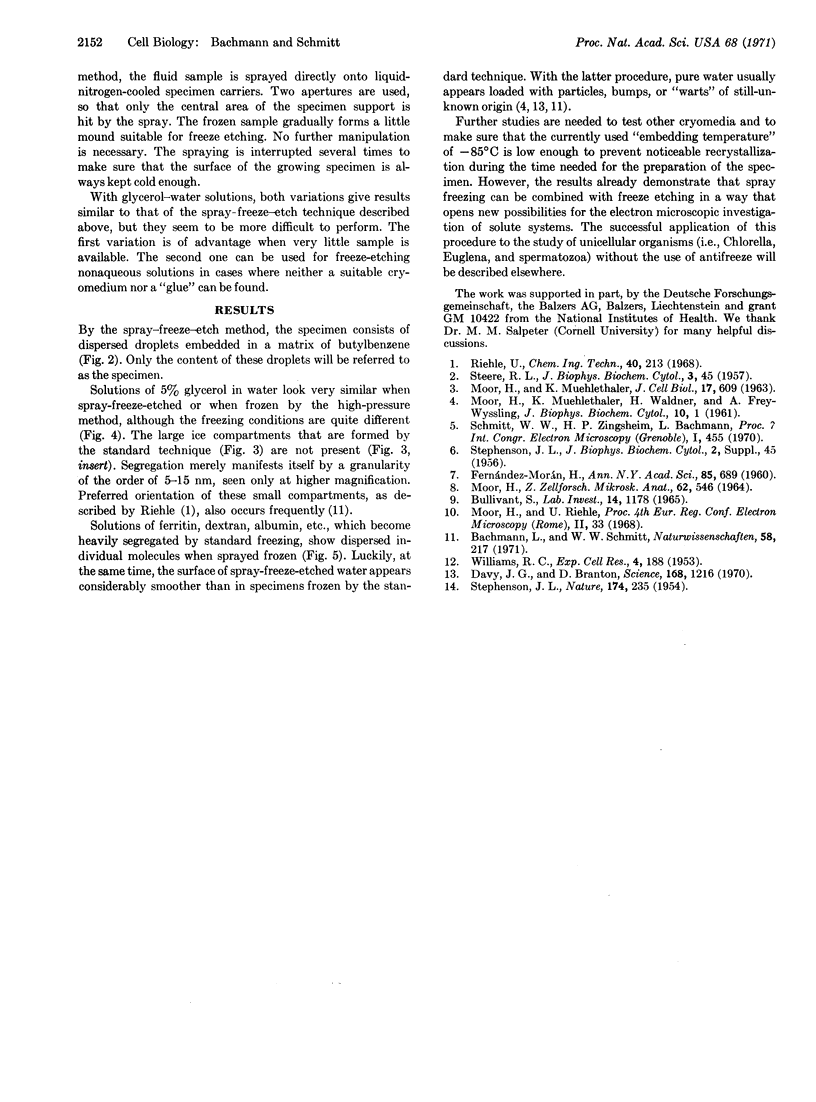
Images in this article
Selected References
These references are in PubMed. This may not be the complete list of references from this article.
- BULLIVANT S. FREEZE SUBSTITUTION AND SUPPORTING TECHNIQUES. Lab Invest. 1965 Jun;14:1178–1195. [PubMed] [Google Scholar]
- Davy J. G., Branton D. Subliming ice surfaces: freeze-etch electron microscopy. Science. 1970 Jun 5;168(3936):1216–1218. doi: 10.1126/science.168.3936.1216. [DOI] [PubMed] [Google Scholar]
- FERNANDEZ-MORAN H. Low-temperature preparation techniques for electron microscopy of biological specimens based on rapid freezing with liquid helium II. Ann N Y Acad Sci. 1960 Apr 13;85:689–713. doi: 10.1111/j.1749-6632.1960.tb49990.x. [DOI] [PubMed] [Google Scholar]
- MOOR H. DIE GEFRIER-FIXATION LEBENDER ZELLEN UND IHRE ANWENDUNG IN DER ELEKTRONENMIKROSKOPIE. Z Zellforsch Mikrosk Anat. 1964 Apr 28;62:546–580. [PubMed] [Google Scholar]
- STEERE R. L. Electron microscopy of structural detail in frozen biological specimens. J Biophys Biochem Cytol. 1957 Jan 25;3(1):45–60. doi: 10.1083/jcb.3.1.45. [DOI] [PMC free article] [PubMed] [Google Scholar]



